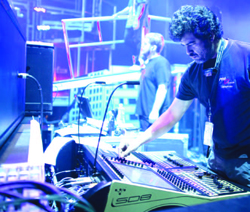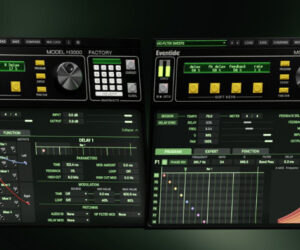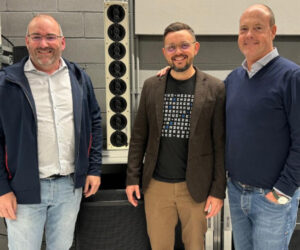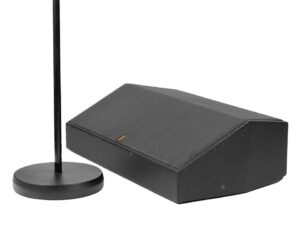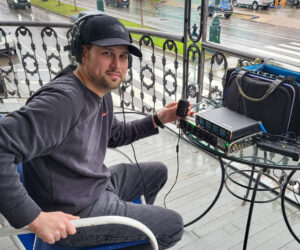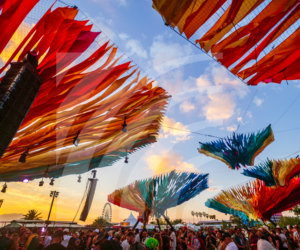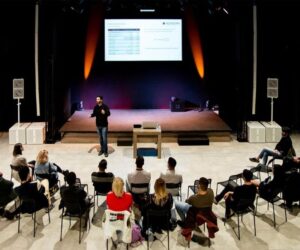Today’s concert tours are captivated by the advantages digital consoles offer, and tour production must be lightweight and efficient to take on the current economy.
Though many high-profile tours still fill arenas, a second tier is defined by the capacity of a 53-foot trailer, growing and shrinking to fit each venue by picking up local equipment.
While digital consoles can also be sourced locally and loaded with a file in seconds, tour engineers often prefer to carry their own for the comfort factor.
The use of layers allows control of ever larger channel counts with fewer faders on smaller desks.
Smaller footprints free up more space in the truck for T-shirts and lights, as well as at the mix position for additional patrons or the all-important video director.
Onboard effects and processing keeps the entire mix “in the box,” and this also allows engineers to easily jump to a duplicate desk by just emailing a file when necessary.
Modern digital consoles are easily interfaced with digital recording systems and virtual soundcheck – the ability to play back a previous show’s tracks through the console prior to the band’s arrival – is quickly becoming a favored practice.
The next hot option is likely an iPad app. Here’s a look at digital console applications on some of this summer’s tours.
Tony Luna | Justin Bieber’s “My World”
Teen sensation Justin Bieber has been playing sold-out arenas all year, with Tony Luna mixing monitors on a DiGiCo SD8-24, a 24-fader version of the SD8. Luna uses almost all of the console’s 60 inputs, which can be either stereo or mono.
Like DiGiCo’s other SD consoles, input channels can be configured with a spare input for fast changeovers, while reducing channel count. Multiple channels can also share the same spare mic, whether hard-wired or wireless.
The SD8 has eight channels of 4-band dynamic EQ, which the bigger SD7 console has on every channel. Luna says the dynamic EQ helps with sibilance, but is mostly needed when Bieber gets too close to screaming girls.
Besides the main LCR mix bus, the SD8 has 24 mixes that can be either stereo or mono. Everyone is on stereo IEM except dancers who listen to kick, snare, hat and Bieber’s vocal through the sidefills.
The SD8’s two banks of 12 faders each have four layers and channels can be freely assigned. Luna assigns drums, bass and keys, guitars and vocal inputs to their own layer on the left, but Bieber’s vocal is assigned to every layer so it’s always available. The right bank’s layers are assigned wireless and wired IEM outputs, wedges and effects, plus a separate page for talkback inputs.
Randy Lane “American Idols LIVE! 2010” Randy Lane went directly from the last date of Season 4 winner Carrie Underwood’s “Play On” spring tour to the first show of “American Idols LIVE! 2010” tour, which kicked off July 1 in Detroit. It stops at 34 arenas and 10 sheds across North America.
Lane’s tour credits include James Taylor, Julio Iglesias and Three Doors Down, all mixed on a Yamaha PM5D, and he was the first to take a DSP5D on tour with Dream Theater. The PM5DEX is a PM5D whose inputs are doubled with a 10 rack-space DSP5D to add 48 mono and 4 stereo channels plus 8 more effects engines, without increasing the console’s footprint.
The two layers of the control surface accommodate drums and guitars, and the keyboards and intro tracks, respectively. There are 34 guitars backstage, as most of this year’s finalists were guitarists.
The additional DSP5D inputs accommodate the 10 lead vocals plus backing vocals, with this third layer accessed by a User Defined Key and its effects engines used as 16 VCA modeled “Compressor 260” inserts on vocal channels.
The PM5D’s effects are shared across all the inputs with cascaded auxiliary buses. Lane uses the Rev-X reverb algorithms, with Rev-X Room on drums, a small Rev-X Plate on some vocals and a Rev-X Hall with pre-delay for ballads. An analog-style “Compressor 276” stereo insert is on the drum sub-group.
The PM5D is fitted with MY16 MADI cards, and Lane records 64 channels to Stienberg Nuendo on a Dell laptop via an RME MADIface, clocked with an Apogee Big Ben that allows him to perform a virtual soundcheck.
Take the PSW Photo Gallery Tour of Digital Consoles On Tour.


